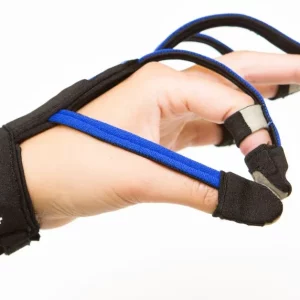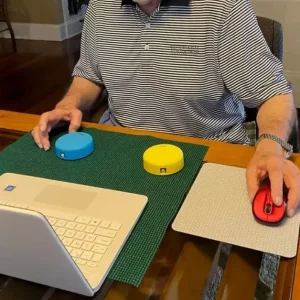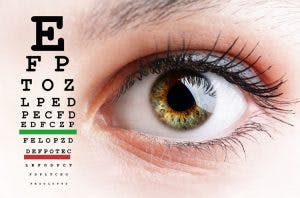Many stroke survivors experience shoulder problems after stroke. Practicing shoulder exercises for stroke patients can help relieve pain and improve movement and strength of the shoulder joint. These improvements can help survivors return to completing their daily activities comfortably and independently.
Both physical and occupational therapists are able to treat shoulder impairments and can guide survivors in which exercises are most appropriate for their condition. Working with a therapist can help survivors ensure they are using proper form while exercising, which is essential to minimize the risk of further shoulder injuries.
In this article, common shoulder conditions are reviewed. The benefits of shoulder exercises for stroke patients are also explained. An overview of shoulder exercises for stroke patients and tips for recovery are included, as well.
Use the links below to jump directly to any section of this article.
- Shoulder problems following stroke
- Benefits of practicing shoulder exercises
- Shoulder exercises for stroke patients
- Practical tips
Stroke-Related Shoulder Conditions
There are a number of physical aftereffects of stroke. Depending on which area(s) of the brain have been affected, survivors may experience shoulder pain and/or a loss of shoulder mobility, stability and strength. These problems can make it challenging for survivors to complete many of their daily activities, including dressing themselves, retrieving foods from the refrigerator or overhead cupboards, and completing housework.
Some common conditions that may affect the ability to move the shoulder after stroke include:
- Hemiparesis or hemiplegia: one-sided weakness or paralysis that may limit shoulder range of motion
- Shoulder subluxation: partial dislocation of the upper arm bone from the shoulder socket that can result in restricted and painful shoulder movements
- Spasticity: involuntary muscle tightness which may result in a stiff or painful shoulder
- Frozen shoulder: when the shoulder joint becomes inflamed, stretched, or damaged, resulting in the shoulder becoming stiff or “frozen” in place; may occur when the shoulder has been immobilized for a period of time
- Unilateral neglect: an inattention to one side of the body and environment, resulting in a lack of use of body parts on the affected side
While many shoulder conditions may develop immediately after stroke, others result due to prolonged non-use or immobilization. While there is always hope for recovery, addressing shoulder problems promptly after a stroke can limit the risk of further complications.
Benefits of Shoulder Exercises for Stroke Patients
Consistently practicing shoulder exercises for stroke patients is an excellent way to improve shoulder function. This is because repetitively practicing tasks can stimulate an adaptive rewiring process within the brain referred to as neuroplasticity.
The more frequently a specific shoulder movement is practiced, the more the brain perceives a need for that motion. This prompts the brain to create and strengthen neural connections associated with that movement. With regular practice over time, healthy areas of the brain can assume control over functions that were housed in the damaged areas, resulting in functional improvements.
Therefore, consistently practicing targeted shoulder exercises for stroke patients is essential when pursuing recovery. Physical and occupational therapists can help survivors determine which exercises may be most effective. They can also provide helpful feedback to ensure that the exercises are being completed accurately.
Therapeutic Shoulder Exercises for Stroke Patients
The most effective shoulder exercises for stroke patients vary depending on the individual’s condition. For example, those with shoulder subluxation or paralysis may benefit from weight-bearing exercises, while those with severe spasticity or weakness may benefit from passive or active range of motion exercises.
Included below are some commonly recommended shoulder exercises for stroke patients. However, the best way to determine which exercises are most appropriate is to consult a physical or occupational therapist.
Some of the best types of shoulder exercises for stroke patients include:
1. Weight Bearing Exercises
Weight bearing exercises are a great way to improve shoulder subluxation and improve communication between the brain and the arm. Since weight bearing exercises simply involve putting weight through the arm, these exercises can be integrated into daily activities or practiced as part of an exercise program.
To practice weight bearing through the shoulder, start by sitting in a chair with an armrest. Rest the forearm on top of the armrest with the palm facing down, leaning toward the armrest to put some weight through the arm. Hold for 10 seconds, then relax. Ensure the shoulder stays away from the ear during this exercise, rather than shrugging upward, and stop if any pain occurs.
For more of a challenge, practice weight bearing while standing, resting either the hand or forearm on the countertop (depending on its height) and leaning toward the arm. Practicing weight bearing during regular activities, such as tooth brushing or watching television, can help survivors exercise more frequently, activating recovery through adaptive brain rewiring.
2. Tabletop Shoulder Exercises
Tabletop shoulder exercises for stroke patients can be ideal to address spasticity or paralysis. These exercises, which can be referred to as passive range of motion exercises, involve stretching the arm in different directions to improve mobility.
Start by sitting at a table and clasping the hands together. Place the hands and forearms on the table, then lean forward, pushing the arms as far as possible across the table. Hold this position for 10 seconds, while ensuring the affected shoulder is not hiking up toward the ear. For added motivation, place a water bottle across the table and attempt to push it a little further away with each repetition.
To work on moving the arms side to side, start again with the hands clasped on the table. Then, push the arms to the left side of the table, then back to the right, holding for 10 seconds in each direction. Making large circles on the table in both directions with the arms can also improve shoulder mobility.
3. Cane Exercises
Cane exercises can be used to improve mobility and strength for suvivors who have mastered tabletop shoulder exercises and are able to grasp objects. They can be completed using a cane or other long object, such as a broom handle or yardstick.
Start by lying on a bed facing the cieling, holding a cane with both hands, palms down. Using the unaffected arm as support, lift the cane up over the head. Keeping the elbows straight, reach back toward the base of the headboard, allowing gravity to help stretch the shoulders. Hold for 5 seconds, then bring the arms back down.
To practice moving the arms to the side, again start by lying down. However, this time, use the affected hand to hold the end of the cane, with the unaffected hand holding the middle. Keeping the affected elbow straight, push the affected arm out to the side, as if doing a snow angel. Hold the stretch for 5 seconds, then relax.
For a challenge, try these exercises while sitting up or standing. This requires the arms to move against gravity, which can improve strength. Again, it is important to keep the affected shoulder from hiking up during these exercises to ensure the appropriate muscles are being used.
4. Scapular Exercises
While exercises targeting the arms are a great way to improve shoulder function, it is important to remember that a lot of shoulder mobility and stability comes from the scapula (shoulder blade). Therefore, it can be essential to address scapular strength and motion while practicing other shoulder exercises for stroke patients.
Starting in a seated position, shrug the shoulders upward, then relax them back down. Ensure the shoulders are completely relaxed before starting another repetition. Next, try hunching the shoulders forward, then bringing them back, pulling the shoulder blades together in the middle of the back. Finish by doing shoulder circles, shrugging the shoulders in a circular motion, both clockwise and counterclockwise.
Practicing wall pushups can improve scapular strength and stability. Stand an arm’s length away from the wall, placing the arms straight out in front of the body and resting the palms of both hands on the wall. Then, bend the elbows as if doing a pushup, leaning the body toward the wall. Straighten the elbows to return to the starting position. For a challenge, start farther away from the wall.
5. Aquatic Shoulder Exercises
Practicing shoulder exercises in a pool can help survivors improve pain-free mobility and strength. Exercising in warm, shoulder-deep pool water allows muscles to relax while providing a light resistance for movements.
Water exercises can be practiced with or without aquatic dumbbells, which can add additional resistance. Never exercise in a pool unsupervised if there are any balance or safety concerns.
A few aquatic shoulder exercises include:
- Shoulder flexion and extension: Starting with the arms straight out ahead of the body and the palms facing downwards, push both hands down to the sides. Next, raise the arms to return to the starting position and repeat.
- Diagonal shoulder movement: Start with the affected arm straight out to the side, with the palm facing forward. Then, reach across the body to touch the opposite hip. Return to the starting position and repeat.
- Shoulder claps: Start with the arms both straight out toward the sides, palms facing forward. Then, bring both hands together as if clapping, keeping the elbows straight. Open the arms back out to the sides, and repeat.
Practicing shoulder exercises for stroke patients, whether in or out of the water, is an excellent way to improve shoulder mobility, strength and stability. Regular, repetitive practice of each appropriate shoulder exercise can boost adaptive brain rewiring through neuroplasticity to optimize recovery.
Want 25 pages of stroke recovery exercises in a PDF? Click here to download our free Stroke Rehab Exercise ebook now (link opens a pop up for uninterrupted reading)
Tips for Practicing Shoulder Exercises for Stroke Patients
Typically, survivors should try to practice 10 to 15 repetitions, once or twice per day, of each of the above exercises that are appropriate for their condition. However, if any pain develops, it is best to take a break and try again at a later time.
Hiking the shoulder up towards the ear is one of the most common mistakes that survivors use when practicing shoulder exercises. While movement may seem to improve when hiking the shoulder, doing so limits the activation of the targeted muscles, resulting in improper movement patterns. This can cause further complications in the future, such as increased pain or limited mobility.
To prevent hiking the shoulder, individuals can exercise while watching themselves in a mirror. Often, visual feedback from the mirror can help survivors monitor and correct improper movements. Setting a hand on the shoulder can also help to keep it down in an appropriate position.
Additionally, working with a physical or occupational therapist can help survivors ensure that they are using proper form and focusing on the right exercises for their condition. In addition to recommending personalized exercises, therapists may also use specialized techniques, such as manual therapy, electrical stimulation and therapeutic taping, to improve shoulder functions.
Therapists may also provide a customized home exercise program, allowing survivors to carry over the skills learned in therapy at home. Practicing shoulder exercises for stroke patients at home outside of therapy sessions can further promote neuroplasticity, boosting recovery.
Understanding Shoulder Exercises for Stroke Patients
Many conditions, such as shoulder subluxation and hemiplegia, can result in impaired shoulder functions and pain after stroke. Practicing shoulder exercises for stroke patients is a great way to improve mobility, stability and strength of the shoulder.
Consistent, repetitive practice can optimize recovery outcomes by activating neuroplasticity, the process of adaptive rewiring within the brain. There are a number of types of shoulder exercises for stroke patients, including weight bearing exercises, scapular stabilization exercises and aquatic exercises.
A physical or occupational therapist can help survivors determine which exercises are most appropriate for their specific condition. Working with a therapist, as well as practicing shoulder exercises regularly at home, can help survivors optimize their recovery.










